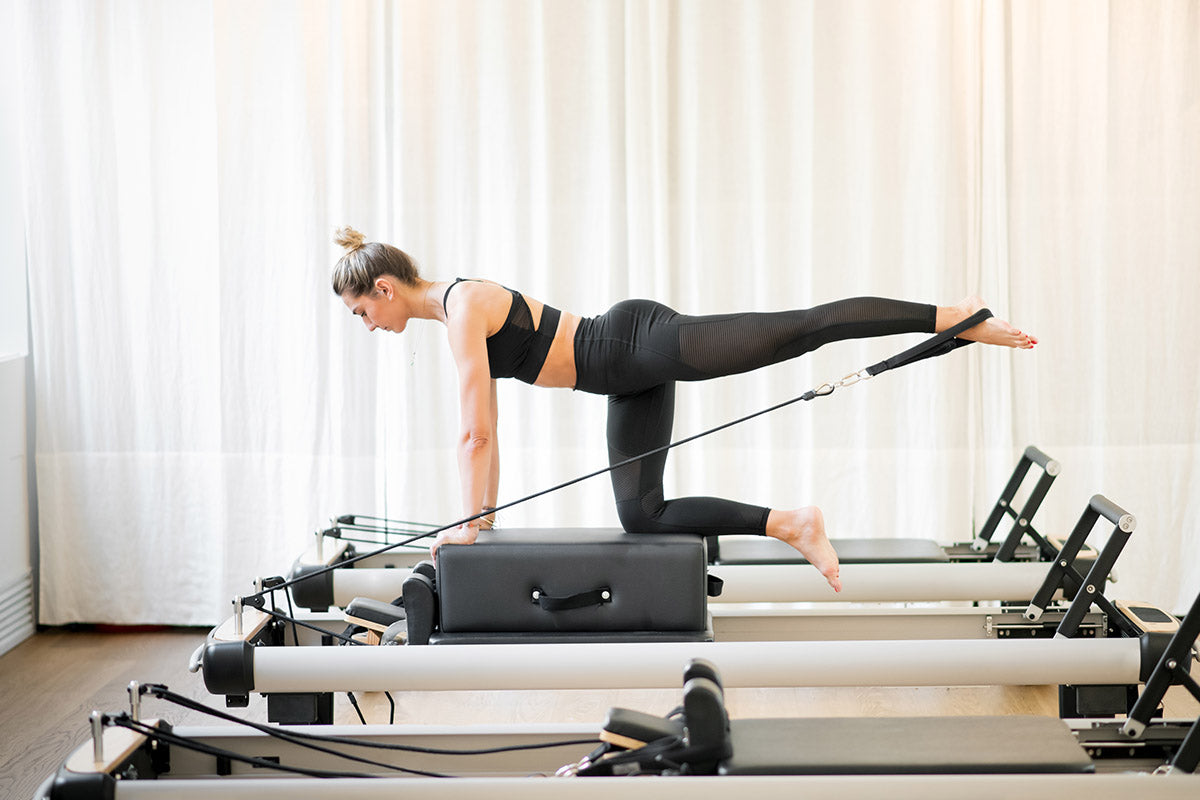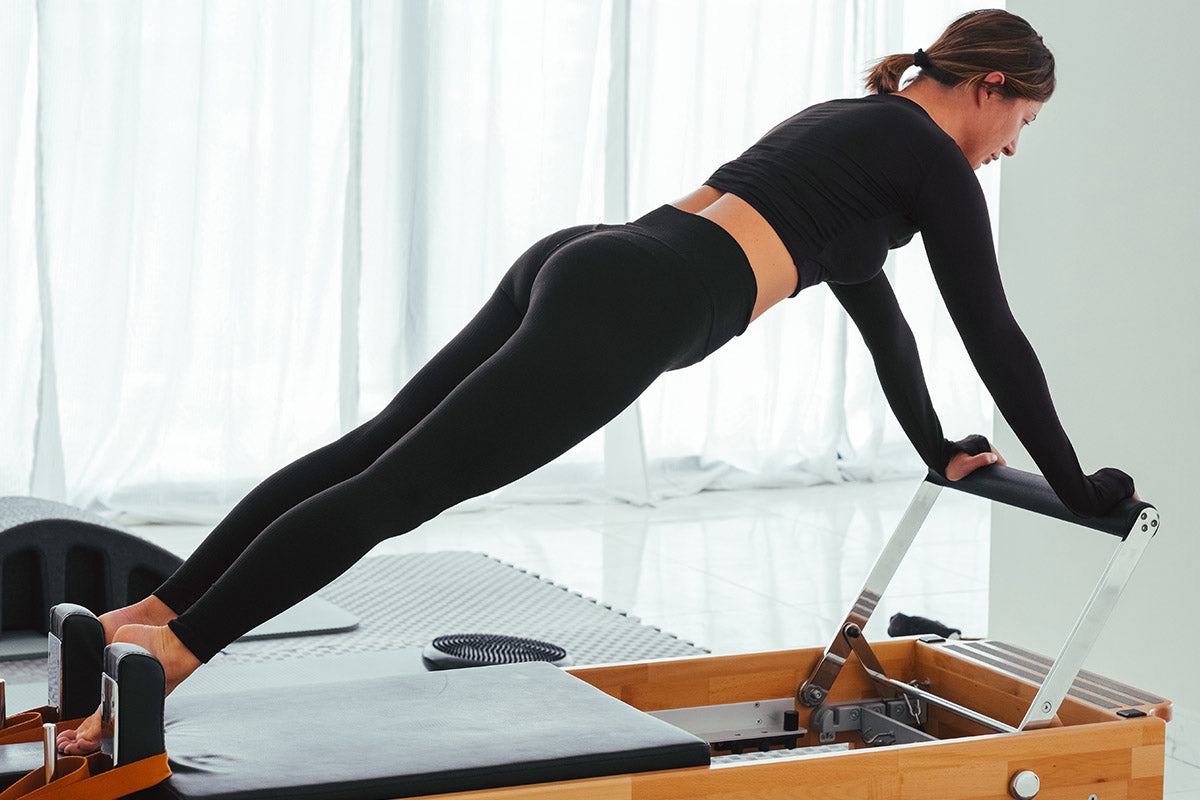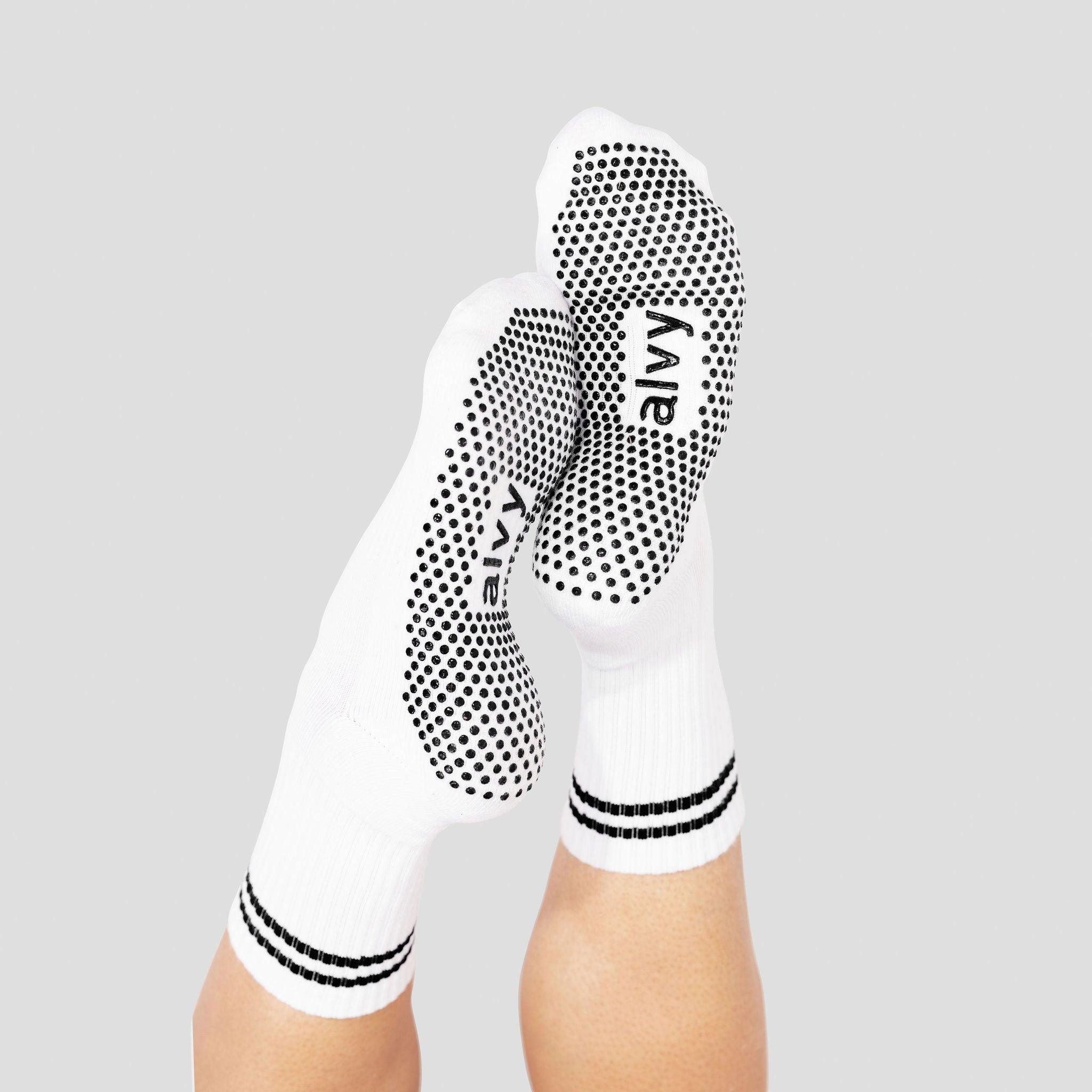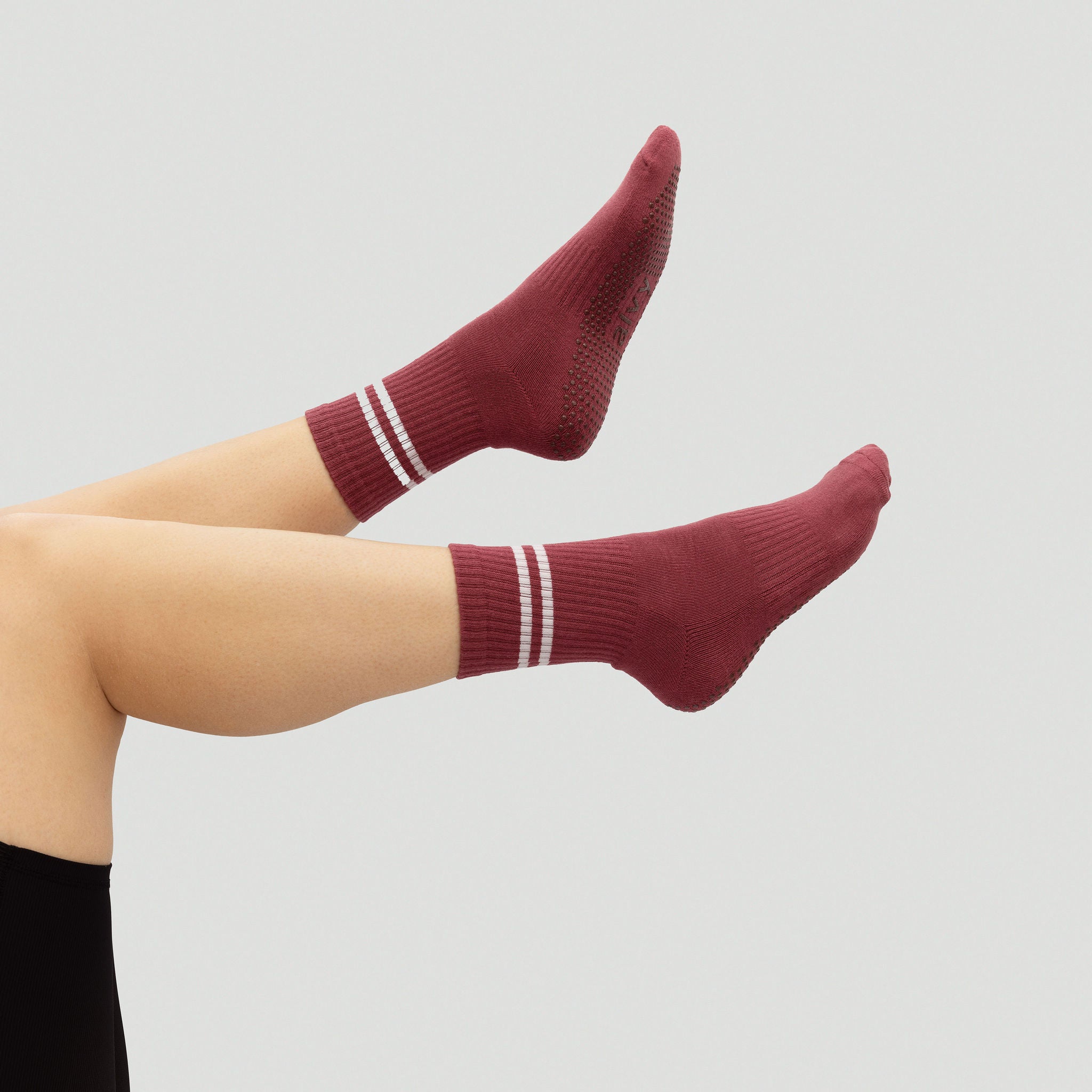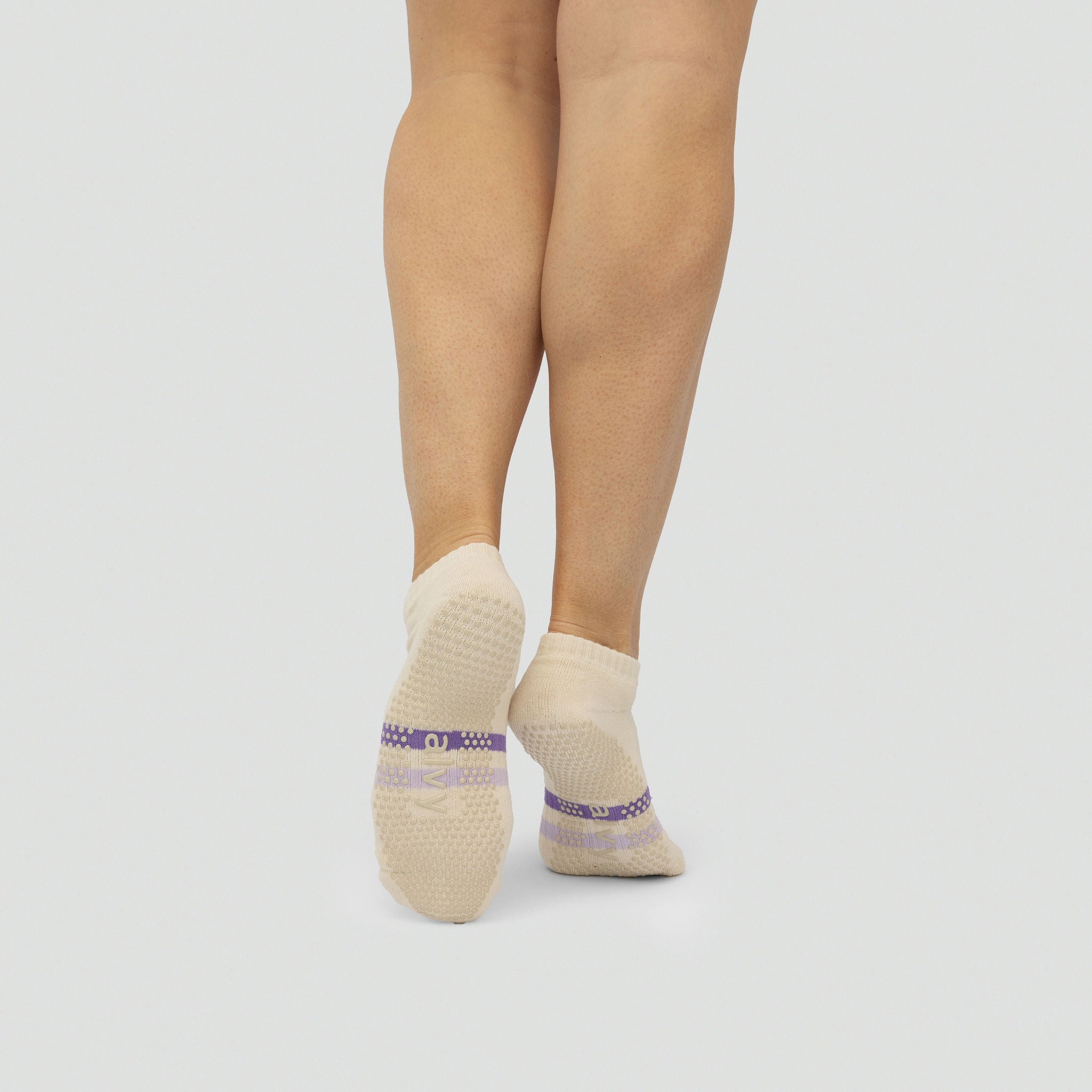If you have taken a few Pilates classes, some of these Pilates basics might resonate with you. Joseph Pilates, the founder of the practice, created these principles to ensure that exercises are carried out efficiently and effectively.
Keep reading if you are interested in what they are and how to apply them for a more complete and enjoyable Pilates class.
The Six Foundations of Pilates To Be Aware Of
In terms of the do’s and don’ts of Pilates, these principles are simply essential.
1. Control
The essence of every Pilates movement lies in control. Joseph Pilates advocated executing exercises with complete mastery over the body, eliminating erratic, unregulated movements.
This concept prioritises precision and intention over volume, guaranteeing that each motion is purposeful and accurate while under spring load. This reduces the risk of injury and optimises the workout's advantages, such as toning and core strengthening.
Example
When you perform the Roll-Up, concentrate on articulating your spine one vertebra at a time rather than using momentum to sit up quickly. Moreover, using momentum to get up is cheating - you should use your core instead.
Start lying on your back with your arms overhead and legs extended. As you roll up, envision gradually lifting your spine off the mat, engaging your core deeply. This deliberate, steady movement enables you to concentrate on using the correct muscles, enhancing your overall control.
My Practice Tip
When practising physical exercises, consider using a mirror or seeking feedback from a trainer to observe your movements. But also be acutely aware of what you are doing. If it feels wrong, it probably is wrong. Also grab a pair of our Pilates socks to give you extra traction and control on the mat (or reformer).
2. Concentration
Concentration in Pilates is essential for fully engaging the mind in the present task, so try to park any outside or work-related stresses at the door. Each movement requires focused attention and awareness to ensure that the body is not just mechanically performing the exercises but actively engaging the targeted muscles.
Concentrating on your body and its movements can strengthen the mind-body connection, leading to a more complete and enjoyable workout.
Example
When performing the Single-Leg Stretch exercise, concentrate on activating your core muscles, elongating your spine, and ensuring proper body alignment.
Begin by lying on your back, lifting your head and shoulders off the mat, and extending one leg while bringing the other knee toward your chest. Focus on feeling the engagement in your abdominal muscles and the lengthening of your limbs while staying completely focused on the movement to prevent distractions.
My Practice Tip
It is important to take a few moments to clear your mind with deep breathing or meditation before starting a session. Remember that you are there for around 40 minutes, so make sure you get the most out of it by leaving any external worries at the door.
3. Centring
Centring in Pilates involves focusing on the centre of your body, also known as the "powerhouse" or core. It emphasises strengthening core muscles, including the abdominals, lower back, hips, and glutes, which form the basis for all movements.
Building strength in these muscles enhances stability, balance, and overall body control.
Example
The plank. You knew I was going to say it.
In the Plank position, keeping your core tight, hips aligned, and back straight is essential. To start, lie prone with your forearms on the mat (or reformer carriage), elbows under your shoulders, and legs extended. Engage your core as you lift your body into a straight line from head to heels. Keeping your navel drawn toward your spine and maintaining core engagement helps reinforce the centring principle.
My Practice Tip
Incorporating core-targeted exercises such as the Hundred or Double Leg Stretch into your routine can help strengthen your core. But trust me, mentally applying yourself during these exercises will help.
Related: 80/20 Rules In Pilates Explained
4. Precision
In Pilates, precision is crucial. It involves focusing on the details of your movement, aligning your body correctly, and performing exercises with accuracy to maximise their benefits and prevent injury. Each exercise in Pilates is purposefully designed, and practising precision ensures you get the most out of every movement.
Example
When performing the Pilates Teaser, it is essential to pay attention to the alignment of your spine, the angle of your legs, and the position of your arms.
To begin, sit with your knees bent and feet on the floor. Then, lift your legs and extend them while rolling your spine back slightly, balancing on your sit bones. Your arms should be lifted parallel to your legs. Ensure that your legs are at the same height, your spine is straight, and your movements are controlled.
My Practice Tip
Breaking down complex exercises into smaller parts and practising each with attention to detail is a great way to improve your performance.
5. Breathing
Proper breathing is essential in Pilates. It involves coordinating your breath with your movements. This typically means inhaling through your nose and exhaling through your mouth.
Joseph Pilates, the founder of Pilates, believed that correct breathing was crucial for effective practice and overall well-being. In fact, he had a famous quote about it:
“Breathing is the first act of life and the last. Our very life depends on it”
Click here for more famous Joseph Pilates quotes.
Example
When performing the Spine Stretch Forward exercise, it's important to focus on deep inhales as you sit tall and full exhales as you reach forward. Begin by sitting with your legs extended in front of you and flexing your feet.
Inhale to lengthen your spine upwards, and exhale to bend forward from the waist. Use your breath to enhance the stretch and intensify the movement, maintaining a steady and rhythmic breathing pattern.
My Practice Tip
To improve mindfulness during your practice, it's beneficial to begin each session with breathing exercises, like diaphragmatic breathing. By integrating this heightened awareness of your breath into your routine, you can enhance the quality of each movement.
6. Flow
Flow, also known as fluidity in Pilates, signifies the uninterrupted and smooth progression of movements during exercises. The aim is to transition gracefully and easily from one movement to the next, integrating all the principles and fostering a well-rounded and harmonious practice.
This principle emphasises the importance of maintaining momentum and rhythm, which enhances endurance and coordination - in other words, it requires practice.
Example
When performing a Pilates sequence such as Rolling Like a Ball followed by Single Leg Stretch, it's important to maintain a smooth transition between the two exercises. After completing the rolling motion, seamlessly transition into the starting position for the Single Leg Stretch without any pauses.
My Practice Tip
This is nothing but practice, practice, practice. Try to link exercises together in your routine, practising the transitions as much as the exercises themselves.


